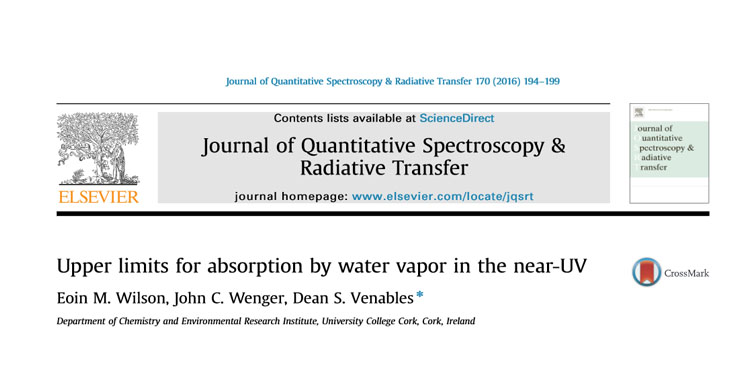In This Section
New Publication in The Journal of Quantitative Spectroscopy and Radiative Transfer

Publication from CRAC Research.
An atricle has been published in based on research carried out by Full List of CRAC Publications.
Abstract
There are few experimental measurements of absorption by water vapor in the near-UV. Here we report the results of spectral measurements of water vapor absorption at ambient temperature and pressure from 325 nm to 420 nm, covering most tropospherically relevant short wavelengths. Spectra were recorded using a broadband optical cavity in the chemically controlled environment of an atmospheric simulation chamber. No absorption attributable to the water monomer (or the dimer) was observed at the 0.5 nm resolution of our system. Our results are consistent with calculated spectra and recent DOAS field observations, but contradict a report of significant water absorption in the near-UV. Based on the detection limit of our instrument, we report upper limits for the water absorption cross section of less than 5×10−26 cm2 molecule−1 at our instrument resolution. For a typical, indicative slant column density of 4×1023 cm2, we calculate a maximum optical depth of 0.02 arising from absorption of water vapor in the atmosphere at wavelengths between 340 nm and 420 nm, with slightly higher maximum optical depths below 340 nm. The results of this work, together with recent atmospheric observations and computational results, suggest that water vapor absorption across most of the near-UV is small compared to visible and infrared wavelengths.
Other Links:Dr. Eoin Wilson
Centre for Research into Atmospheric Chemistry
Ionad Taighde Um Ceimice Atmaisféarach
Contact us
Lab B1, Kane Building, University College Cork, T12 YN60.
